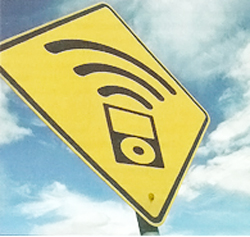
It was finally replaced by the CD – due to the superior audio quality. Wait! No, it wasn’t. It was replaced by the MP3 for the very same reasons that the cassette was popular in the first place: portability, recordability, and low cost. Remember Napster? The original one, I mean?
And what brought about this radical change was the increase in speed and power of the personal computer, allowing for the heavy number crunching required to turn PCM flles into the much smaller, compressed versions to save flle space and make Internet transfer practical. That’s right—MP3s were around for several years before the iPod came along.
Admittedly, the iPod made MP3s portable and truly user-friendly in the same way that the Sony Walkman did for the cassette. But the point is that sound quality was NOT what drove these formats, it was convenience features.
WHAT ABOUT THE IN-BAND CONTENT?
And here is the real kicker for our part of the industry, meaning sound reinforcement. I’ve mentioned this before, but it bears repeating: the equipment is rarely the problem in most of our situations. Sure, there are times when we are limited to using sub-standard or inadequate gear.
But hopefully, we are all wise enough to avoid those situations for the majority of our work. And at the same time, we all hope that our junior and less-experienced brethren become increasingly savvier and demand proper equipment, proper set up time, and generally aim to produce better sound.
Here’s the bottom line: our problems aren’t generally the lack of super-wide-band system performance, but instead what we often don’t get right between 100 Hz and 10 kHz.That’s right, the 6.5-octave range in the middle of the approximately 10-octave range our hearing offers the1youth among us.
And if we want to come right down to it, the really super-critical part is between 200 Hz and 7 kHz. Looking at the Equal Loudness contours first detailed by Fletcher and Munson at Bell Labs, we know that by far, the human hearing system is most sensitive in this range, with a distinct peak centering on 3-4 kHz.
Of course we want the bass to shake the walls, and of course we want the vocals to sparkle and of course we want the drums to pound everyone’s chest at the appropriate moments and of course we want the cymbals to shimmer. But really, if we can’t get things right between 200 Hz and 7 kHz, we aren’t doing our jobs properly.
Why is this range so important, beyond the obvious fact that our hearing system is most sensitive in this range? Well, first, this is where more than 98 percent of the vocal energy lies… and the drums and the guitars and the strings and the horns.
But the vocals are truly the most important thing, whether we’re doing a rock tour, a corporate event, or sound at our church. The audience can detect anomalies in the vocal sound much more readily than with any other source simply for the fact that we all hear vocals in speech every single day unless we’re in solitary confinement.
And even then, we hear voices in our heads. How many crazy people claim to hear snare drums in their heads? How many claim to hear guitars in their heads? No, it’s voices! Like the one telling me right now that I’ve beat this dead horse to a pulp.
HOW IT ALL TIES IN
Which brings me to my last point: that hearing loss and the sound reinforcement industry are not unrelated. How many of us already show signs of some loss, or of tinnitus? I’ll bet more than a few, including myself, have this problem. And what about the people who attend your events?
Hopefully we, and our audiences, won’t be so bad off after a few years listening to our mixes that they need some kind of ultrasonic system installed in their heads in order to hear the first words of their grandchildren.
So instead of concentrating on “digital vs. analog” and whether or not our microphones reproduce signals up past 50 kHz, let’s worry about what really matters: good sound in the mid-band.
Karl Winkler is the vice president of sales/service at Lectrosonics and has worked in professional audio for more than 20 years.
